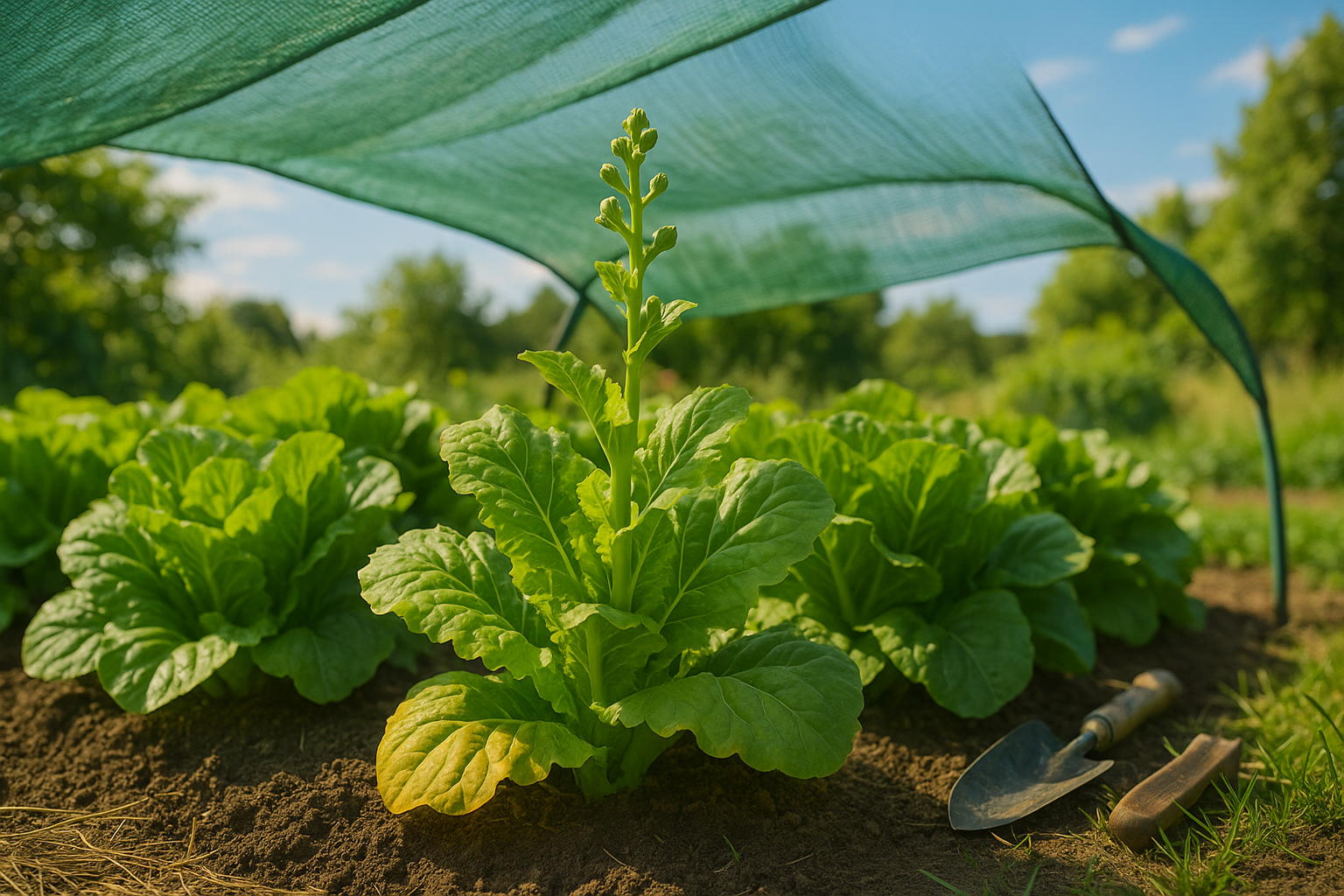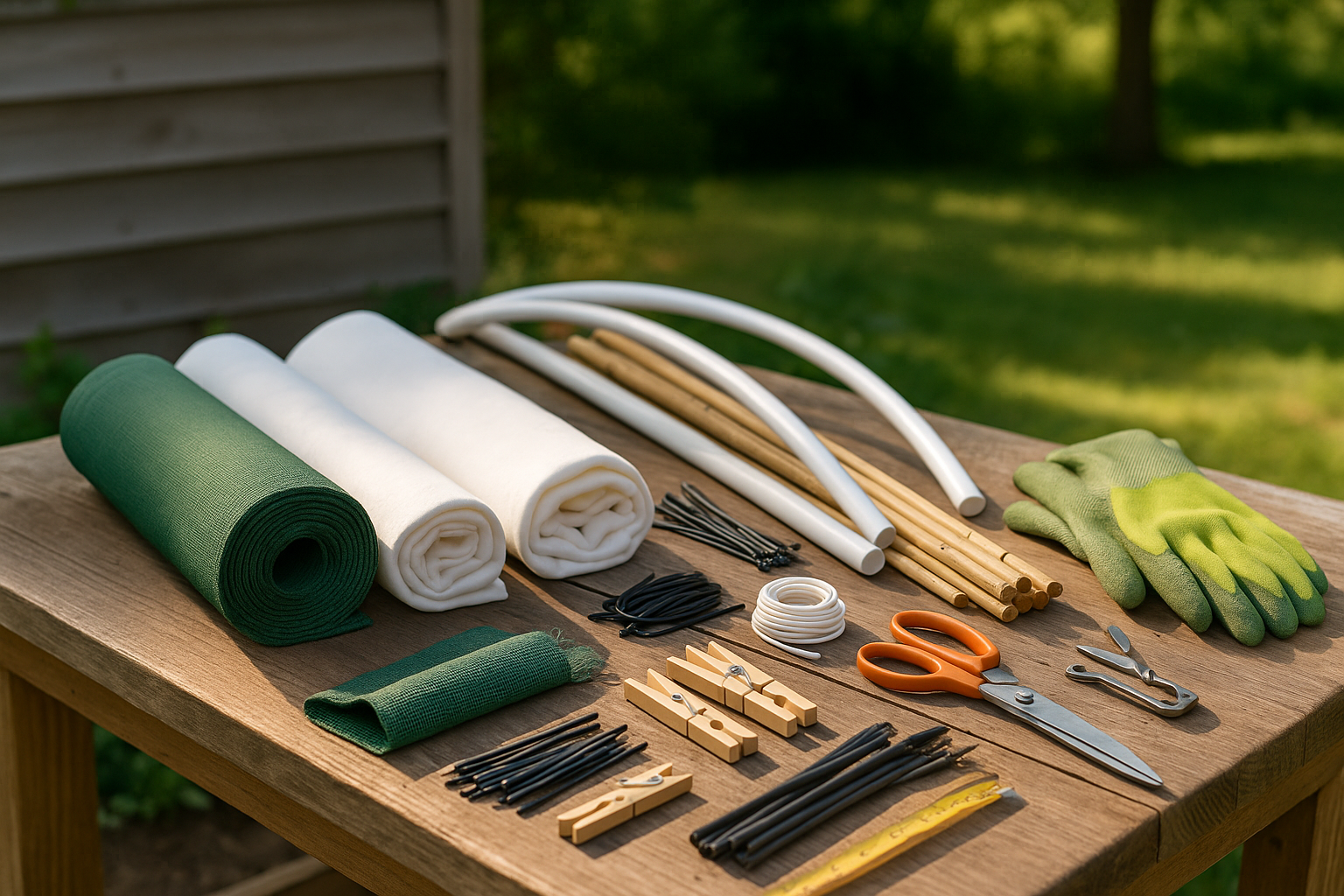Introduction

If you’ve ever watched your leafy greens wilt or turn bitter under the summer sun, you’ll understand why a lettuce shade cover is a gardener’s secret weapon. When temperatures rise, lettuce—one of the most sensitive salad crops—can quickly bolt, sending up flower stalks and turning its sweet leaves bitter. Even worse, prolonged exposure to heat can leave your lettuce limp and unappetizing, undoing weeks of careful tending. Hot weather doesn’t just slow down your salad harvest; it can bring it to a complete halt.
That’s where a lettuce shade cover comes in. These simple, practical structures shield your crop from the harsh midday sun, lowering leaf temperature and maintaining soil moisture. The result? Lettuce grows slower, resists bolting, and stays crisp. By filtering out intense sunlight, a shade cover mimics the canopy of a forest, giving your greens the protection they need to thrive. In fact, gardeners from Texas to California rely on shade covers to enjoy fresh lettuce well into the heat of summer.
In this step-by-step guide, I’ll show you exactly how to build a simple, effective lettuce shade cover for your garden. We’ll explore the best materials to use—like shade cloth, PVC pipes, and garden stakes—and offer tips for easy installation. By the end, you’ll have a reliable DIY solution to keep your lettuce cool, flavorful, and productive all season long. Whether you’re a beginner with a few containers or tending rows of greens, this project is both affordable and accessible.
Understanding Lettuce Shade Needs

Lettuce is a cool-weather crop that thrives in mild sunlight but struggles in intense heat, making it especially sensitive to both sun exposure and high temperatures. Ideally, lettuce prefers daytime temperatures between 60°F and 70°F; anything consistently above 75°F can quickly cause problems.
When exposed to excessive heat and direct sun, lettuce may bolt—meaning it sends up a flower stalk early—causing leaves to turn bitter and growth to slow. Classic signs of heat stress include wilting, yellowing leaves, or tip burn. Once these appear, the quality and yield can drop quickly.
To keep your lettuce happy, light filtering is crucial. The sweet spot for shading is providing 30-50% shade during the hottest hours. Less than that might not protect leaves from scorching, but too much shade (over 60%) can stunt growth and produce weak, leggy plants.
Shade Solutions for Backyard Gardeners
A variety of shade solutions exist:
- Shade fabric: Effective and widely available, it comes rated by percentage, making it easy to match your garden’s needs. However, it can look artificial and may be tricky to secure in windy spots.
- Shade netting: Lighter and allows better airflow, but might not block as much intensity as fabric.
- Natural shade: Provided by nearby trees or taller plants, it’s eco-friendly and attractive, but can be unpredictable and may compete for root space or soil nutrients.
Many growers opt for a simple DIY cover—a frame fitted with shade cloth or lightweight netting—that can be adjusted as the season changes or as your lettuce grows. This approach balances convenience, effectiveness, and cost, giving you full control over the light your lettuce receives.
Choosing the Right Materials for Your Shade Cover

Selecting the ideal materials for your lettuce shade cover is crucial to achieving the perfect balance between sun protection and healthy growth. The most common choice is UV-resistant synthetic shade cloth, often made from polyethylene, which comes in various shade percentages.
For lettuce, a cover that blocks 30% to 50% of sunlight usually works best—30% for areas with milder sun, and up to 50% in hotter regions where leaves are prone to burning. The label or specs on the shade cloth will list this percentage.
While commercial shade cloth is a reliable option, budget-friendly alternatives like old white bed sheets or lightweight mesh netting (even repurposed mosquito netting or lace curtains) can work in a pinch. Sheets generally block less light than purpose-built cloth, so double-layering or using them in shadier gardens might be necessary.
When planning your DIY setup, gather materials such as PVC pipes or flexible conduit for framing arches or “hoops.” Make sure the structure is high enough to allow airflow but low enough to shade your plants. Garden stakes or rebar will anchor the frame, while sturdy clips, zip ties, or twine can secure the fabric in place—office binder clips or clothespins make great low-cost alternatives.
PVC is lightweight, affordable, and easy to bend for small beds, though bamboo poles or sturdy tree branches can be eco-friendly substitutes. Check local reuse centers or discount stores for inexpensive options.
Always ensure your materials are clean, non-toxic, and safe for garden use. Setting up your shade cover doesn’t require expensive items; a mix of creativity and resourcefulness will help protect your lettuce patch from harsh midsummer rays without breaking the bank.
Step-by-Step Instructions

To build an effective lettuce shade cover, start by measuring the length and width of your garden bed or row to ensure your frame will fully cover the area. Choose lightweight, sturdy materials like PVC pipes or EMT conduit for the frame—they’re easy to cut and assemble.
Cut your frame pieces to size and connect them using compatible elbows or connectors to form a hoop or box structure. Make sure the frame is tall enough for your lettuce to grow but low enough to block harsh midday sun. For extra stability, insert the ends of your frame a few inches into the soil or secure them with garden stakes.
Once your frame is in place, drape shade cloth (30-50% shade is best for lettuce) over the top, letting it extend slightly over each edge. Secure the cloth using clips, clothespins, or zip ties; avoid tacking it too tightly to prevent tearing or sagging.
Make sure the cloth can be lifted easily on one side or rolled up when you need to access your lettuce for watering, weeding, or harvesting. Dual-purpose clamps work great for quick removal.
If your area is windy, anchor the cloth at ground level with bricks, landscape staples, or additional stakes to prevent it from blowing away. For sagging issues, add an extra support rod across the center or periodically adjust the cloth’s tension.
Routinely inspect your structure after storms or strong winds and re-secure any loose areas right away.
Don’t forget safety: wear gloves when cutting or assembling frame materials, and check that there are no sharp edges or exposed ends that could scratch or puncture your skin as you work in the garden.
This practical, removable shade cover will help your lettuce thrive through summer’s heat while keeping your gardening routine hassle-free.
Installing and Maintaining Your Shade Cover

Installing your shade cover correctly is key to protecting lettuce from harsh sun and heat. Position the cover so it hovers a few inches above your beds or containers—enough for good air circulation but close enough to block harsh midday rays. Stake or clip it securely at the corners to prevent the wind from carrying it away.
In spring and early summer, keep the cover low to shield young lettuces during their most delicate growth. As days cool in late summer or early fall, raise the cover to allow more light while still offering protection during warm spells, or remove it entirely when consistent cooler temperatures arrive.
Regularly check for holes, tears, or sagging; worn cloth won’t provide enough shade and may invite pests. At least once a season, gently wash your shade cloth with a hose or soapy water to remove dust, sap, or bird droppings—clean cloth lets in more light and lasts longer. Always inspect your frame or supports as well, tightening loose ties and fixing any bent poles.
When the season ends, remove the cloth, shake it out, and let it dry fully before folding for storage in a dry spot away from rodents and moisture. These simple steps help your shade cover work better, ensuring happy, healthy lettuce year after year.
Best Practices
For healthier lettuce, using shade covers can make a huge difference during the hottest parts of the day. Place your covers over lettuce beds in the late morning and keep them there until late afternoon when the sun is strongest—especially during heatwaves or when temperatures consistently hit above 80°F (27°C). Shade cloth with 30–50% blockage works well for lettuce, offering enough protection without blocking necessary sunlight.
As your lettuce grows, check daily to ensure leaves aren’t pressing into the cloth—adjust or raise the cover so leaves have room and airflow. It’s a good habit to briefly remove the shade in the evening to allow plants a blast of cool air.
If you find lettuce wilting despite the cover, check soil moisture; sometimes lettuce still dries out if the soil is too sandy or the wind is strong. Water deeply in the morning to help plants handle afternoon heat.
Mold or mildew beneath the shade cloth can develop if the area’s air circulation is poor or covers are kept too low for too long. If this happens, raise the cloth for better airflow, reduce watering slightly, and be sure to only water at soil level, avoiding foliage. Moving the shade cover off entirely on cloudy days can help prevent excess dampness.
With these steps, your lettuce will enjoy the cool, gentle climate it needs to thrive all summer.
Conclusion
Growing protected lettuce at home doesn’t have to be complicated. With just a few simple strategies—like row covers, DIY cloches, or netting—you’re already on the path to fresher, healthier harvests with fewer pests and less weather damage.
These small shields can make a big difference, helping your lettuce thrive through changing seasons while boosting both yield and taste. Every garden is a little different, so don’t hesitate to tweak your setup: test out different cloth thicknesses, try various supports, or adjust watering as you observe how your lettuce responds.
The beauty of home gardening lies in experimenting and discovering what works best for your unique space, whether you’re planting in raised beds, pots, or a backyard patch. We’d love to hear what works for you—share your successes, creative ideas, or challenges in the comments to help fellow gardeners enjoy their own crisp, homegrown lettuce all season long!
